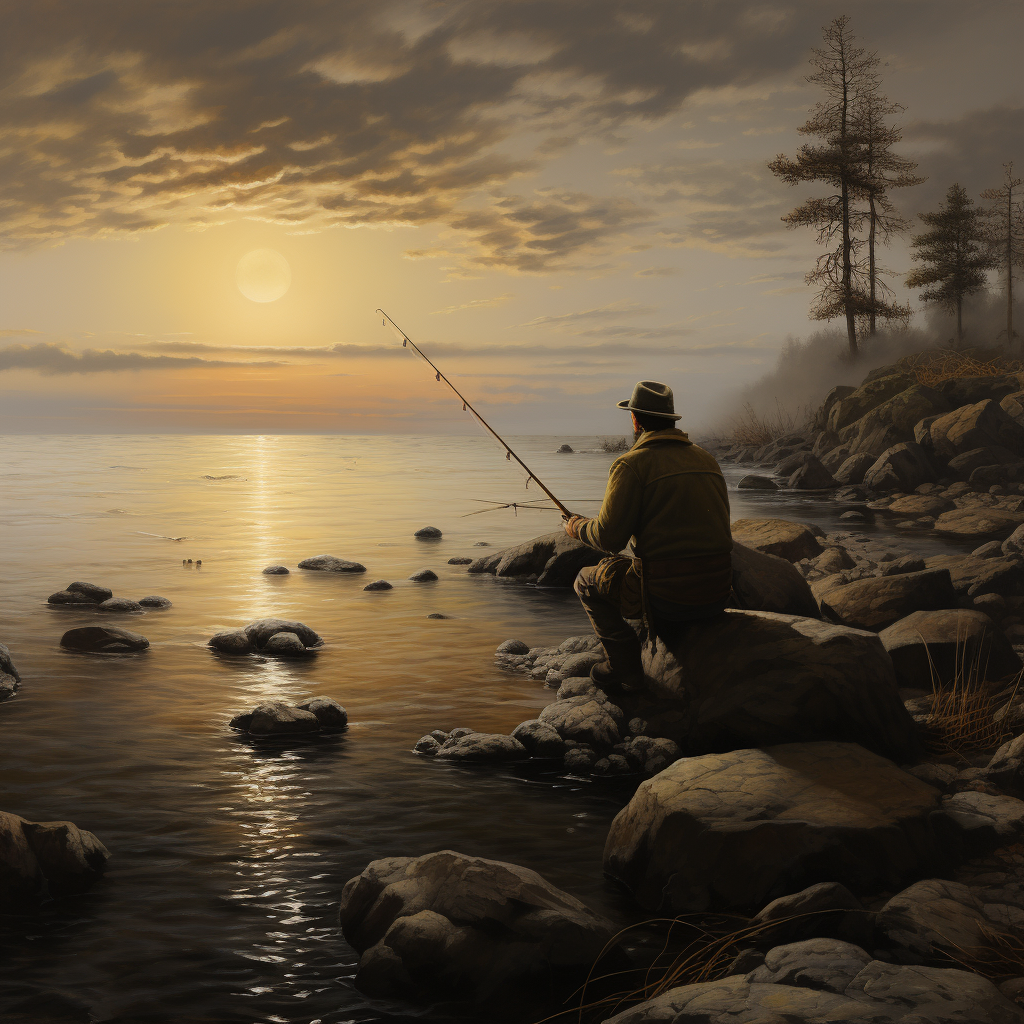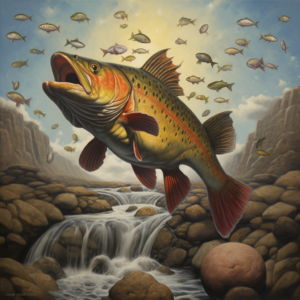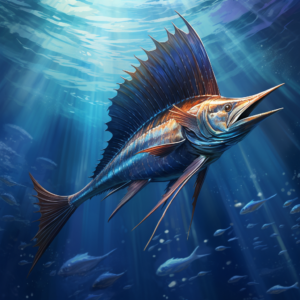Welcome to the exciting world of surf casting, a popular form of saltwater fishing that involves casting a lure or bait from the shoreline into the ocean’s waves. Surf casting is a unique form of beach fishing that requires proper technique, gear, and knowledge of angling.
In this comprehensive guide, we will take you through the basics of surf casting, its connection to saltwater fishing, and how it differs from other forms of angling. We’ll also cover everything you need to know to get started, including tips for selecting the best fishing spot on the beach, understanding the tides, and choosing the right gear for successful surf casting.
Whether you’re a seasoned angler or a beginner, this guide will help you master the art of surf casting and increase your chances of catching that big fish. So, get ready to explore the ocean, feel the thrill of the waves, and discover the secrets of surf casting. Let’s dive in!
Getting Started with Surf Casting
Now that you’re familiar with surf casting, it’s time to get started! Here are our top surf casting tips for beach fishing:
Choose the Right Gear
The right equipment is essential for successful surf casting. Choose gear that matches your skill level and the type of fish you want to catch. A surf casting rod is longer than other types of fishing rods and is designed to cast further. Your reel should have a good drag system to handle big fish. Consider investing in waders, too, which will allow you to stand in the water and cast further into the surf.
Select the Right Spot
When surf casting, it’s important to choose the right spot on the beach. Look for areas where waves are breaking onto the shore, as this is where fish are likely to be feeding. Pay attention to the tide. Fish often feed more actively during high tide, so it’s a good time to cast your line.
Understand the Waves
The waves can affect your casting distance and accuracy. As you cast, watch the waves to get a sense of their timing. Try to cast between sets of waves, as this is when the water is calmer and your bait will be more visible to fish. If you’re new to surf casting, start by casting straight out in front of you. Once you’ve gained more experience, you can experiment with casting at different angles to cover more ground.
Practice Your Casting
Like any skill, surf casting requires practice. Spend time practicing your casting technique on land before heading out to the beach. Practice casting in different directions and with different weights to get a feel for how your equipment handles. Once you’re on the beach, take your time to set up your gear and get comfortable before casting.
Take Care of Your Gear
After each trip, rinse your gear off with fresh water to remove any saltwater and sand. Dry your gear thoroughly before storing it to prevent rust and damage. Check your line and gear after each use to ensure they are in good condition.
By following these surf casting tips, you’ll be well on your way to a successful day of beach fishing. Good luck and happy casting!
Mastering the Art of Casting
Surf casting requires a level of casting skill that may be different from other types of fishing. Your ability to cast longer distances and with increased accuracy will play a significant role in your success.
To improve your casting distance, it is crucial to use the correct surf fishing tackle. Longer rods with fast action and a high line weight rating are a good place to start. These rods will provide the necessary power to cast heavier lures and baits over longer distances. Pairing your rod with a reel that has a high line capacity and a smooth drag system will make it easier to cast and retrieve your line.
When you reach the beach, pay attention to the direction of the wind and the water’s movement. The wind will affect the trajectory of your cast, so it’s important to position yourself upwind of your target area. Similarly, understanding the impact of the tide on your casting distance is crucial. During low tide, you may need to cast farther to reach the same point you would reach during high tide.
Once you are ready to cast, take a balanced stance, with your feet shoulder-width apart, and grip your surf fishing tackle firmly. With your dominant hand, pull the line back to load the rod, and with a fluid motion, release the line forward towards your target. Practice is key; the more you practice, the more comfortable and precise your casting technique will become.
Tip: Consider using bait rigs to achieve greater casting distance. Bait rigs add weight to your rig, enabling you to launch it farther out into the surf.
Remember, surf casting requires patience, practice, and patience. Be patient with yourself, and keep practicing your casting technique to improve your accuracy and distance. With the right surf fishing tackle, a balanced stance, and steady practice, you’ll be casting like a pro in no time!
Strategies for Catching Big Fish
Now that you have familiarized yourself with surf casting and the relevant equipment, it’s time to focus on catching big fish. With the right angling techniques and surf fishing gear, you can increase your chances of landing some impressive catches.
Understanding Angling Techniques
One crucial aspect of catching big fish is understanding the appropriate angling techniques. This involves understanding the behavior patterns of the fish you are targeting and adapting your approach accordingly.
Tip: When targeting bigger fish, it’s important to use a bait rig that is suitable for the species you are targeting. Make sure your bait is well presented, and be patient, waiting for the fish to take the bait before initiating the hook set.
Choosing the Right Surf Fishing Gear
Selecting the right surf fishing gear is essential when targeting larger fish. This includes considering the type of reel and rod you will need to handle these big catches. A sturdy, heavy-duty rod with an appropriate reel is a must.
Tip: When selecting your surf fishing gear, consider the type of fish you are targeting, as well as the conditions you will be fishing in. Factors such as water depth, tide, and current should all be taken into consideration.
By incorporating the right angling techniques and surf fishing gear, you can maximize your chances of catching big fish while surf casting. Remember to stay patient and stay safe while out on the beach. Happy fishing!
Fishing in the Surf: Understanding the Environment
Before you start surf casting, it’s important to understand the environment you’ll be fishing in. Fishing in the surf is different from other forms of fishing, and being aware of the dynamics of the surf can save you a lot of frustration.
The waves, currents, and underwater structures all affect your fishing experience. The waves create a constant ebb and flow, which can make it difficult to keep your bait in one place. The currents can carry your bait away from where you want it to go, so you need to know how to work with them. And the underwater structures, such as rocks, sandbars, and troughs, affect where the fish are likely to be.
When beach fishing, look for areas where the waves are breaking, as this is where the fish are likely to be feeding. You can also look for areas where the water changes from deep to shallow, as this is where the fish will be moving in and out with the tide. Pay attention to the troughs between sandbars, as these can be hotspots for fish.
Safety is also a concern when fishing in the surf. Always be aware of your surroundings and keep an eye on the waves. Never turn your back on the ocean, as a rogue wave can knock you off your feet. It’s also a good idea to wear a life jacket when fishing in rough surf.
Exploring Advanced Surf Casting Techniques
So, you’ve mastered the basics of surf casting and are ready to take your skills to the next level. Here are some advanced surf casting tips and tricks to help you catch bigger fish and become a top angler.
Use Bait Rigs
Bait rigs are a popular method for catching bigger fish. They are easy to set up and work well in surf conditions. Try using a two-hook dropper rig with squid or chunk bait for best results. Remember to vary your bait and rig setup until you find the most effective combination.
Understand Fish Behavior
Knowing how fish behave can increase your chances of catching them. Pay attention to the movement of the waves and the behavior of the birds. These are good indicators of where the fish are and what they are feeding on. Also, try using lures that mimic the movements of the fish’s natural prey to attract more bites.
Adapt to Changing Conditions
The weather and tide can have a significant impact on surf fishing conditions. Be prepared to adapt to changing conditions and adjust your fishing techniques accordingly. For example, on calm days with small waves, it may be better to use lighter tackle and smaller lures to avoid spooking the fish.
Stay Safe
Remember to always put safety first when surf casting. Be aware of the changing tide and stay away from rocky shorelines or strong currents. Wear appropriate clothing and footwear for slippery or wet conditions, and always let someone know where you are fishing and when you will be returning.
By following these advanced surf casting tips and techniques, you’ll be well on your way to catching more and bigger fish. Remember to keep practicing and experimenting with different methods to find what works best for you. Happy fishing!
Maintaining and Caring for Your Surf Fishing Gear
Congratulations on investing in your surf fishing gear! To ensure that you get the most out of your equipment and that it lasts for years to come, you’ll need to practice proper care and maintenance. Here are some tips to help you keep your surf fishing gear in top condition.
Clean Your Gear After Every Use
Once you’re done fishing, make sure to rinse off your gear with fresh water. This prevents salt buildup, which can cause corrosion and shorten the lifespan of your equipment. Use a soft cloth or sponge to gently wipe down your rod and reel, paying extra attention to the joints and moving parts. If you’re using a baitcasting reel, be sure to remove the spool and clean the braking system as well.
Store Your Gear Properly
After cleaning your gear, give it time to dry completely before storing it. Avoid leaving your gear in direct sunlight or extreme temperatures, as this can cause warping or damage to the materials. Store your gear indoors, in a cool, dry place, and avoid cramming it into tight spaces or stacking it on top of other gear. Use protective cases or sleeves to prevent scratches or dings.
Check Your Gear for Wear and Tear
Regularly inspect your gear for signs of damage or wear. Check the line guides on your rod for any cracks or chips, and make sure they’re securely attached. If you’re using braided line, inspect it for any fraying or abrasions, and replace it if necessary. Check your hooks, swivels, and other terminal tackle for rust or corrosion, and replace them as needed. If you notice any loose or worn-out parts on your reel, get them fixed or replaced before using it again.
Replace Damaged Components
If any of your gear is damaged beyond repair, don’t hesitate to replace it. Fishing with damaged gear can lead to disappointing results and even safety issues. It’s always better to invest in high-quality gear from reputable brands, and to replace any worn-out or damaged components as soon as possible.
By following these simple tips, you can keep your surf fishing gear in top condition and enjoy successful fishing trips for years to come. Happy fishing!
Conclusion
Congratulations on completing our comprehensive guide to surf casting! We are confident that this article has given you a solid foundation to begin your own beach fishing journey. Remember, practice makes perfect, so don’t get discouraged if you don’t catch a big fish on your first try. Stick with it, and you will soon reap the rewards of this exciting sport.
Share Your Surf Casting Journey with Others
As you explore the world of surf casting, don’t forget to share your experiences with other fishing enthusiasts. You can join online forums, attend local fishing events, or even start your own blog to document your progress. By sharing your knowledge and insights, you can help others discover the joy of beach fishing and create a vibrant community of surf casters.
Keep Learning and Improving
Surf casting is a never-ending learning process, and there’s always something new to discover. Whether you’re experimenting with new angling techniques, trying out different lures and baits, or exploring new fishing spots, there’s always room to improve your skills and expand your knowledge. So don’t be afraid to try new things and push yourself out of your comfort zone.
We hope you enjoyed reading this guide as much as we enjoyed writing it. Happy fishing!
FAQ
Q: What is surf casting?
A: Surf casting is a fishing technique that involves casting a baited line from the shoreline into the ocean or other bodies of water. It is specifically designed for targeting fish species that inhabit the surf zone.
Q: What is the difference between surf casting and other forms of fishing?
A: Surf casting is unique because it requires specialized gear and techniques to cast long distances from the shore into the surf. It is often done on sandy beaches or rocky shorelines and is focused on catching fish that frequent the area where waves break.
Q: What equipment do I need for surf casting?
A: To get started with surf casting, you will need a surf rod (typically 9-12 feet long), a spinning or baitcasting reel, fishing line (usually braided for increased strength and sensitivity), various terminal tackle (such as hooks, sinkers, and swivels), and bait or lures that are effective in the surf environment.
Q: How do I select a fishing spot for surf casting?
A: When choosing a fishing spot for surf casting, it’s important to look for areas where waves are breaking and creating pockets of water. These pockets provide shelter and food for fish. Additionally, consider factors such as tide changes and underwater structures that may attract fish.
Q: How can I improve my casting distance and accuracy?
A: To improve your casting distance and accuracy, practice your casting technique regularly. Focus on generating power and speed in your cast, while also maintaining control. Experiment with different casting styles and techniques, such as the overhead cast or the sidearm cast, to find what works best for you.
Q: What types of fish can I catch with surf casting?
A: Surf casting provides the opportunity to catch a variety of fish species, including striped bass, bluefish, flounder, red drum, and more. The specific species will depend on your location and the time of year. Research the local regulations and fishing reports to identify the target species in your area.
Q: How should I care for and maintain my surf fishing gear?
A: To ensure the longevity and performance of your surf fishing gear, it’s important to properly clean and store it after each use. Rinse your rods, reels, and tackle with fresh water to remove any salt or sand. Check for any signs of damage or wear and tear and replace any components as necessary.




